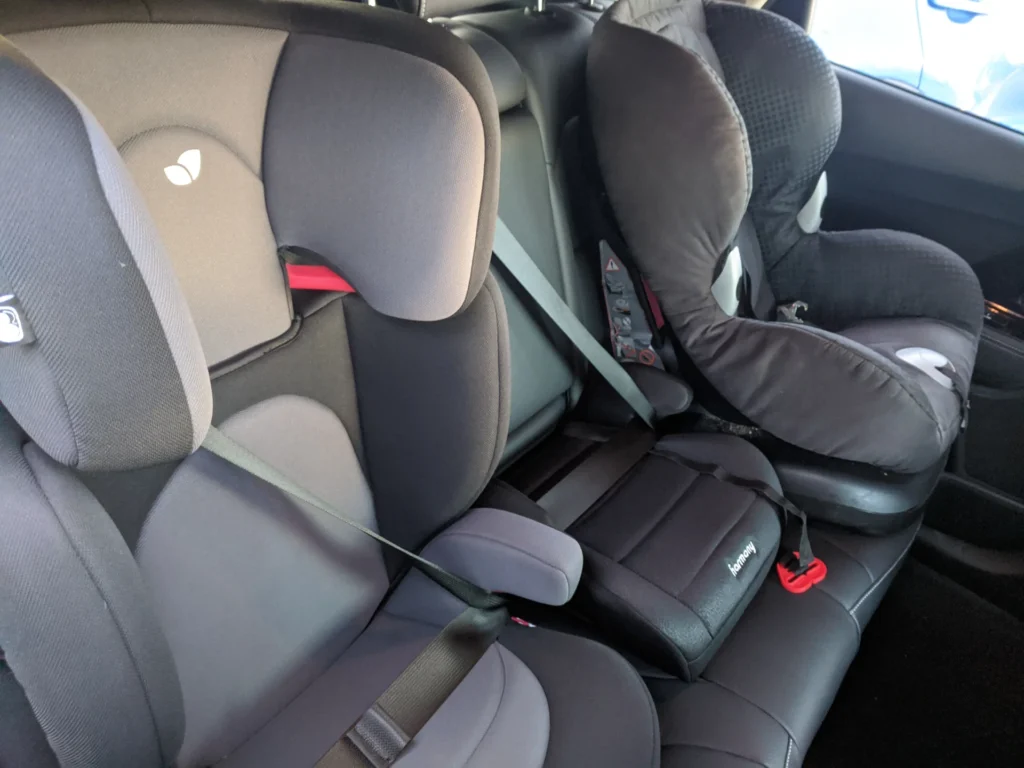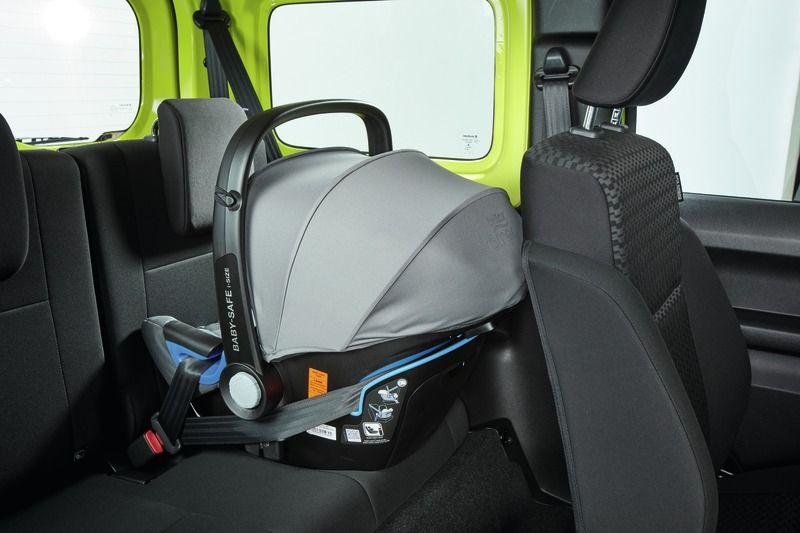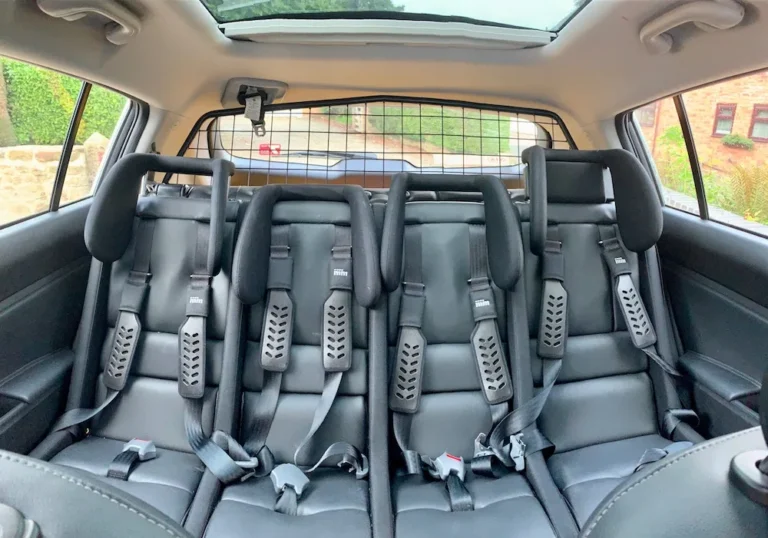No, in most cases, you cannot simply put any seat in any car. Car seats are designed by manufacturers to fit specific models with unique mounting points, frames, and mechanisms. Aftermarket bucket seats and sports seats, while offering customization options, are generally universal and not tailored to any specific vehicle.
Further, attempting to install such seats without considering the compatibility with the car’s design may lead to safety and functionality issues. It’s crucial to consult with professionals, adhere to manufacturer guidelines, and potentially use additional brackets or modifications to ensure a secure and proper fit when swapping seats in a car.
Factors Influencing Seat Interchangeability

Several factors influence the interchangeability of seats in cars. Understanding these factors is essential when considering the replacement or modification of seats:
Car Model and Make: Different car models and makes have unique designs, including specific mounting points, frames, and seat tracks. Interchangeability depends on whether the new seats align with these elements in the target vehicle.
Seat Design and Dimensions: Car seats come in various shapes, sizes, and designs. The interchangeability is affected by the compatibility of the new seats with the interior space, visibility, and access to controls within the specific car.
Mounting Points and Seat Tracks: The mounting points and seat tracks vary between vehicles, and aftermarket seats may not align with the existing infrastructure. Assessing compatibility in terms of bolt points and adjustment mechanisms is crucial.
Safety Regulations: Car seats are integral to occupant safety and must comply with safety regulations and standards. Installing seats that do not meet these requirements can compromise the safety features and performance of the vehicle.
Electrical Components: Modern car seats often come with electrical components for features like heating, ventilation, and power adjustments. Compatibility with the electrical systems of the target vehicle is a key consideration.
Upholstery and Material Compatibility: The type of upholstery and materials used in the seats can affect both the aesthetics and functionality. Ensuring compatibility with the existing interior and the climate conditions of the region is important.
Manufacturer Guidelines: Adhering to the guidelines provided by the car manufacturer is crucial. These guidelines often specify the recommended seats and any modifications required for safe and compliant installations.
Customization and Modifications: If customization is desired, additional modifications, such as using new brackets, may be necessary to make the seats interchangeable. Professional installation services can help ensure proper fitting and safety.
General Considerations for Seat Compatibility
When evaluating seat compatibility in a car, several general considerations should be taken into account to ensure a successful and safe installation:
Matching Car Interior Design: The aesthetics of the new seats should align with the overall design of the car’s interior. Consider factors such as color, style, and materials to achieve a cohesive and visually pleasing result.
Assessing Seat Adjustability Features: Verify that the new seats offer adjustability features compatible with the driver’s and passengers’ needs. This includes seat height, recline, and lumbar support adjustments to ensure comfort during driving.
Upholstery and Material Compatibility: The type of upholstery and materials used in the new seats should complement the existing interior and provide comfort suitable for the climate of the region. Consider factors such as breathability, durability, and ease of maintenance.
Safety and Crash Performance: Prioritize seats that meet safety standards and regulations. Consider how the new seats may impact the vehicle’s overall crash performance and compatibility with existing safety features, including airbag deployment systems.
Consideration of Seat Ergonomics: Evaluate the ergonomic design of the new seats to ensure they provide adequate support and comfort during extended periods of driving. Proper ergonomics contribute to driver well-being and reduce fatigue.
Accessibility and Controls: Ensure that the new seats do not obstruct access to essential controls, such as the steering wheel, pedals, and dashboard. The placement of seat adjustment controls should also be convenient for easy use.
Weight and Balance: Consider the weight of the new seats and how they may affect the overall weight distribution and balance of the vehicle. Excessive weight or imbalance can impact handling and performance.
Manufacturer Recommendations: Consult the manufacturer’s recommendations for both the car and the new seats. Manufacturers often provide guidelines on compatible seats and any specific requirements for installation to maintain safety and warranty considerations.
Testing and Trial Fitting: Before finalizing the installation, perform trial fittings and test the functionality of the new seats. This helps identify any potential issues and ensures a proper fit before securing the seats in place.
Why Putting Any Seat in Any Car Can Be Hazardous: Safety Concerns
Customizing your car’s interior with new seats may seem tempting, but overlooking potential safety risks can have serious consequences. Installing any seat in any car poses hazards that could impact your safety and that of your passengers.
Here are key safety concerns to bear in mind:
- Airbag Deployment: Mismatched seats can interfere with the deployment of strategically placed airbags, rendering them ineffective or causing them to inflate directly into occupants, resulting in severe injuries during a collision.
- Seat Belt Compatibility: Incompatible seats can compromise the anchoring points for seat belts, leading to potential loosening or detachment during an accident. This increases the risk of occupant ejection and serious injuries.
- Structural Integrity: Installing a seat that weakens the car’s crash safety and crumple zones can significantly raise the risk of catastrophic injuries for everyone in the vehicle.
- Improper Seat Stability: Mismatched mounting points or insecure installations can result in seat instability, even during routine driving. This instability may cause seats to move or collapse during sudden maneuvers, potentially causing injuries.
- Visibility and Ergonomics: Seats not designed for your specific car might obstruct visibility or create awkward driving positions, impairing your ability to react quickly in emergencies and increasing the risk of accidents.
Always prioritize safety:
- Consult a qualified mechanic or car seat specialist before attempting any seat replacement.
- Look for seats specifically designed or homologated for your car model to ensure compatibility and safety.
- Avoid modifying car structures or compromising safety features to fit a seat.
- Prioritize secure mounting and proper seat belt anchoring for all seats in your car.
Customization and Modifications For Extra Seat
Purpose and Goals: Clearly define the purpose and goals of your customization. Whether it’s enhancing performance, improving aesthetics, or adding specific features, having a clear vision will guide your decisions.
Regulatory Compliance: Ensure that any modifications comply with local regulations and safety standards. Non-compliance may lead to legal issues, void warranties, or compromise safety, emphasizing the need to stay within the boundaries of the law.
Professional Consultation: Seek guidance from automotive professionals or specialists before initiating any modifications. Their expertise can provide valuable insights into the feasibility, safety implications, and potential challenges associated with your customization ideas.
Quality Parts and Materials: Opt for high-quality aftermarket parts and materials. Cutting corners on quality can lead to suboptimal performance, increased wear and tear, or even safety hazards. Investing in reputable brands ensures durability and reliability.
Safety Upgrades: Consider safety upgrades as a priority. Modifications that enhance braking, handling, or visibility contribute to overall safety. This may include upgrading brake systems, installing better lighting, or improving suspension components.
Documentation and Records: Keep detailed records of all modifications performed on your vehicle. This documentation can be valuable for insurance purposes, resale, or future servicing. It also helps maintain transparency regarding the changes made to the vehicle.
Budgetary Planning: Plan your budget wisely, factoring in not just the cost of modifications but also potential maintenance and upkeep. Unexpected expenses may arise, and having a financial buffer ensures a smoother customization process.
Aesthetic Harmony: Maintain a sense of aesthetic harmony in your modifications. While personalization is encouraged, an overly eclectic mix of modifications may result in a disjointed appearance. Strive for a cohesive and visually pleasing result.
Resale Value Consideration: Understand that extensive modifications can impact the resale value of your vehicle. While personalization is enjoyable, striking a balance to appeal to a broader audience can positively influence resale potential.
Legal and Regulatory Aspects

Local Traffic Laws: Familiarize yourself with the traffic laws and regulations specific to your region or country. Different jurisdictions may have varying rules regarding vehicle modifications, and understanding these laws is essential to avoid legal complications.
Manufacturer Guidelines: Adhere to the manufacturer’s guidelines and recommendations for modifications. Deviating from these guidelines may not only impact the vehicle’s warranty but also pose safety and performance risks.
Emission Standards: Ensure that any modifications comply with emission standards. Some jurisdictions have strict regulations regarding vehicle emissions, and non-compliance can result in fines or restrictions on vehicle use.
Safety Standards: Prioritize modifications that enhance safety rather than compromise it. Ensure that any alterations, especially those related to critical safety systems, meet or exceed established safety standards.
Inspection and Certification: In certain regions, modified vehicles may be subject to inspection and certification to ensure compliance with safety and emissions standards. Understand the inspection requirements and ensure that your modifications meet these criteria.
Insurance Implications: Inform your insurance provider about any significant modifications. Failure to disclose modifications can lead to coverage issues in the event of an accident. Some modifications may also impact insurance premiums.
Homologation and Approval: Certain modifications may require homologation or approval from relevant authorities. Seek guidance on the approval process for specific modifications to ensure legal compliance.
Noise Regulations: Consider local noise regulations when making modifications that could impact the vehicle’s sound profile. Exhaust modifications, for example, may be subject to noise restrictions in some areas.
Community Standards: Be mindful of community standards and noise ordinances. Modifications that excessively disturb the peace or violate local ordinances can result in legal consequences.
Documentation: Keep thorough documentation of all modifications, receipts, and certifications. This documentation can serve as evidence of legal compliance and may be required in case of inspections or legal inquiries.
FAQ’s
Do all seats fit in all cars?
No, Not every car seat fits in every vehicle. It’s crucial to ensure the seat is the right fit for your specific car. Test the seat you plan to buy to guarantee a proper fit and purchase one that can be installed correctly each time.
Do all car seats fit all cars?
No, Even ‘universal’ or ‘semi-universal’ car seats might not fit every car perfectly. R129 (i-Size) seats, while compatible with some passenger seats, might not suit your child’s needs. Always verify compatibility before purchasing.
Is it possible to change seats in a car?
Yes, it’s entirely possible to change seats in a car, including swapping power seats for manual ones or vice versa. As long as the seat’s centerline aligns with the steering wheel’s centerline and allows for proper seat belt use and door closure, it should work fine.
Can you use any car seat?
No, Not every car seat will be suitable for every vehicle. It’s crucial to ensure that the seat fits correctly in your car for optimal safety. Smaller restraints can still be safe, but a snug and appropriate fit without any interference with the vehicle is essential.
5.How do I know if seats will fit in my car?
Consult both your car seat manual and your vehicle owner’s manual for guidance. Always perform a test installation to confirm a proper fit before using the seat. This step ensures safety and compatibility between the car and seat.
Final Words
The idea of putting any seat in any car isn’t as straightforward as it might seem. Each car is designed with specific seats in mind, considering factors like safety, size, and mounting points.
Moreover, trying to fit just any seat into a car can lead to problems – it might not be safe, could interfere with important features like airbags, and may not even physically fit properly. It’s important to check with experts, follow guidelines, and prioritize safety to make sure any changes you make to your car are both comfortable and secure for you and your passengers.

